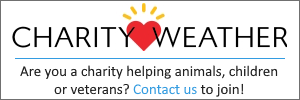Wahkiakum School District administrators have been working long hours, consulting with Wahkiakum Health and Human Services, and Office of the Superintendent of Public Instruction (OSPI) to create a plan for students to return to the classroom for the new school year in the middle of a pandemic.
In a special meeting on Tuesday, Superintendent Brent Freeman went over the details with the board of directors.
Initially, school was scheduled to resume on August 31 for the new academic year, but they will use a couple extra days for planning and staff development and begin on Wednesday, September 2.
K-3 students will return to the classroom full-time, Mondays through Thursdays. Grade 4-12 students will be alternating days on a hybrid A/B schedule, with A’s coming to campus on Mondays and Wednesdays and B’s in the classroom on Tuesdays and Thursdays. Everyone will practice remote learning on Fridays, and both groups will be learning remotely the days they aren’t on campus.
Traditionally, the buses would pull up in front of the schools for loading and unloading. Now, students will get off the bus at the gate on the School Access Road, and students will go through the gate to the elementary and middle schools, or walk to the high school from there.
Buses will be loaded from back to front and unloaded front to back. Siblings will sit together, and seats will be alternated to provide social distancing. Masks will be required, and there will be hand sanitizer on the bus. There are sanitization procedures in place.
The district may stagger some arrivals, and there is hope that the reduced number of 4-12 students coming to school each day will create more room.
Everyone will be required to wash their hands before entering any of the buildings. There will be sinks in front of the high school, and a bank of them near the locker rooms. There will be another bank of sinks between the elementary and middle schools. There will be opportunities for frequent hand washing throughout the day and hand sanitizer will be available.
There will be a daily health screening for all students and staff. Parents will be expected to screen their child at home, and they will be checked again at the school. The district has purchased visual screeners and if anyone screens high, they will be pulled aside and re-checked with a handheld thermometer.
Classrooms have been altered to allow for six foot distancing, and they will be using additional common areas for learning. There may be some exceptions to the six foot rule, as they need to provide equitable services to students with disabilities, etc.
Cohorts will be established, with the smallest cohort expected to be nine and the largest at 17 at the grade school. At the middle school and high school, cohorts are expected to average around 15, but cannot exceed 30, Freeman said.
“With Dr. Steven Krager’s permission to move forward this way, he let us have much bigger cohorts than we were expecting as long as we can keep them in tight cohorts,” Freeman said. “Every one of those cohorts will be monitored daily in the class. If there is ever an outbreak, or even a fever, and we have to send kids home, instead of sending the whole school home, then we can just send that group home.”
Krager is the public health officer for the county.
K-3 will be easy, Freeman said, because they will all be in the same classroom, eating and learning together.
Electives make high school a little harder to manage, but they are working through it.
Meals will be eaten in classrooms, no longer in big groups in lunchrooms. Cohorts might even take their meals outside and have picnics.
Access to all the buildings will be restricted. Masks will be required. The school has a year's supply of disposable masks on hand, if necessary.
In fact, they are in good shape, as far as supplies, Freeman noted.
A cleaning regimen is in place, thanks to help from Wahkiakum Health and Human Services.
Daily attendance will be taken, regardless of whether students are in the classroom or remote. The grading policy will go return to normal, and not be pass/fail as it was at the end of last year. Students who have an incomplete will have all year to make that up.
Freeman had to identify the percentage of students who have adequate technology and connectivity, which he determined to be zero to 30 percent, citing what he had learned from a survey conducted for the Wahkiakum Broadband Committee.
“I looked at where we have connectivity and don’t,” he said. “As you would suspect, you lose your connectivity up the Elochoman or out in East or Middle Valley.”
The district has purchased more mobile hot spots and chrome books in order to help as many students as they can.

Reader Comments(1)
Firstclass writes:
I think this is a BIG mistake. Putting teachers and children in danger. I have a middle schooler and that puts me in the high risk group for catching COVID-19. I think it should all be done virtually until this is completely OVER! All it takes is one to infect the rest and I'm sure you can't guarantee every kid will wash their hands everytime they enter a room.
08/13/2020, 8:55 am